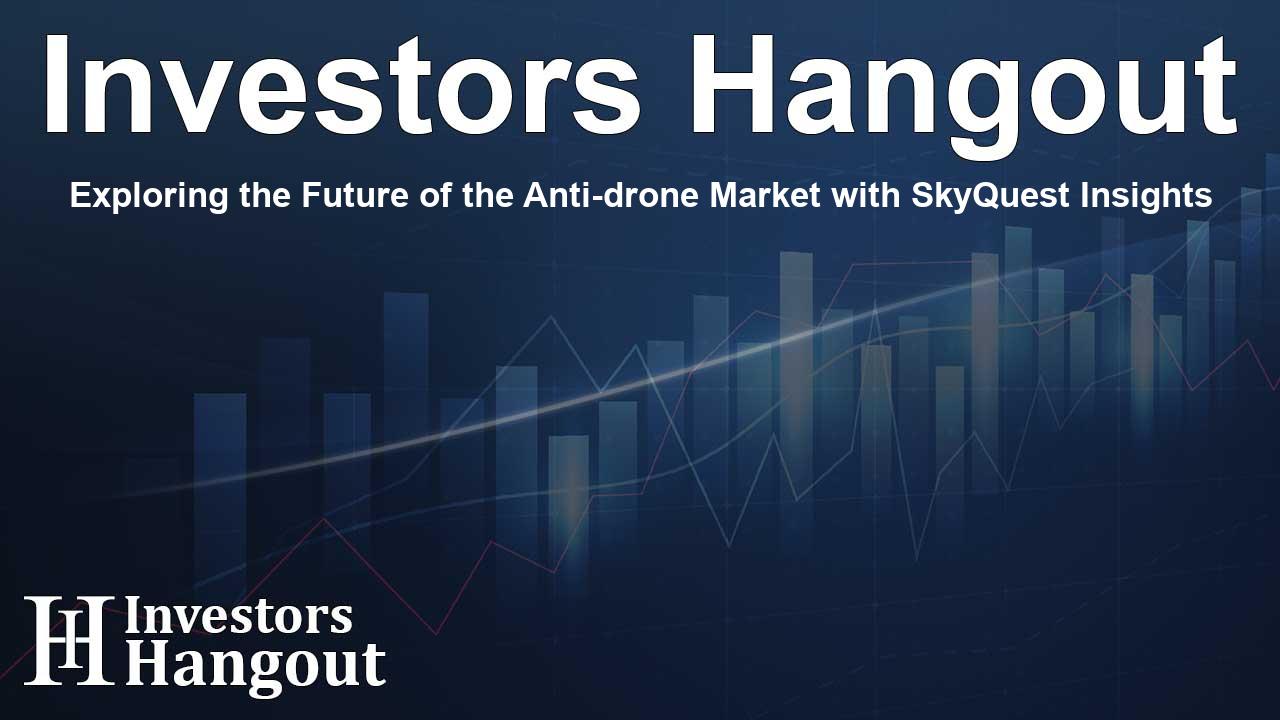Exploring the Future of the Anti-drone Market with SkyQuest Insights

Introduction to the Anti-drone Market
As the number of drones continues to rise rapidly, particularly within military and defense sectors, the demand for anti-drone technology is skyrocketing. SkyQuest Technology forecasts that the anti-drone market will achieve a staggering valuation of USD 13.38 billion by 2031, demonstrating a remarkable compound annual growth rate (CAGR) of 28.1% between 2024 and 2031. This growth reflects escalating concerns over security threats posed by rogue drones and a growing investment in advanced anti-drone solutions.
Factors Driving Market Growth
A significant factor contributing to the expansion of the anti-drone market is the increase in drone applications in various industries. Organizations are adopting drones for diverse purposes—including surveillance, deliveries, and information gathering—which simultaneously raises safety concerns. This surge in drone technology implementation has motivated nations worldwide to invest in robust anti-drone measures.
Security Challenges Posed by Drones
The rapid proliferation of drones has led to heightened risks, especially regarding safety and privacy. Recent incidents have underscored the potential for drones to interfere with commercial flights, public events, and sensitive locations. This alarming trend has created urgency among policymakers and industry leaders to develop reliable anti-drone systems that can effectively identify and neutralize unauthorized drone hazards.
Technical Advancements Fueling Market Potential
Investments in research and development are crucial for creating sophisticated anti-drone technologies. Developers are focusing on integrating cutting-edge hardware and software components, such as advanced sensors, jamming systems, and artificial intelligence, to enhance detection and neutralization capabilities. The growing application of UAVs (unmanned aerial vehicles) in anti-drone systems signifies a transformative shift in how these technologies are approached.
The Role of UAVs in Anti-drone Solutions
UAV-based anti-drone systems are gaining popularity due to their ability to quickly respond to drone threats. These solutions capitalize on UAVs' long-range capabilities and payload flexibility, allowing for a versatile approach to countering unauthorized drones effectively. The advancements in UAV technology are expected to play a pivotal role in shaping the future dynamics of the anti-drone market.
Regional Analysis of Market Trends
Regionally, North America is projected to lead the charge in the anti-drone market, driven by significant military and defense investments. With escalating drone-related incidents, there is a pressing need to secure airspace and protect both public and private interests from potential drone threats. Countries within this region are actively developing and deploying advanced anti-drone solutions to address the challenges arising from drone proliferation.
Market Segments and Key Opportunities
The anti-drone market is composed of various segments, including hardware, software, and service-based solutions. The hardware sector, focusing on sensors and jamming devices, currently holds a substantial market share, thanks to expanding investments in R&D for advanced technologies. Companies are also exploring the intersection of artificial intelligence with anti-drone systems to enhance operational capabilities and responsiveness.
Challenges in the Anti-drone Market
While the market thrives with potential, there are challenges to navigate. High development and deployment costs can hinder growth, alongside technical limitations related to existing radar technologies. Addressing these challenges effectively requires innovative approaches in product development and emerging technologies aimed at counteracting drone threats.
Leading Players and Competitive Landscape
The competitive landscape is marked by prominent organizations such as Raytheon Company, Lockheed Martin Corporation, and Thales Group, among others. These companies are leveraging their technological expertise to pioneer next-generation anti-drone solutions. The dynamic nature of the market demands constant innovation to stay ahead of potential threats.
Conclusion
In summary, the anti-drone market offers tremendous growth opportunities driven by escalating security needs and technological innovations. As organizations and governments mobilize to address the challenges posed by drones, the evolution of this market presents an exciting prospect for technology providers and stakeholders alike.
Frequently Asked Questions
What is the projected market size of the anti-drone industry by 2031?
The anti-drone market is expected to reach USD 13.38 billion by 2031.
What factors are driving the growth of the anti-drone market?
Rising drone applications in various sectors, security concerns, and increased investments in technology are key growth drivers.
Which region is anticipated to dominate the anti-drone market?
North America is projected to lead the market due to significant investments in military and defense capabilities.
What are the main challenges facing the anti-drone market?
High development costs, technical limitations, and inefficacy against jamming systems present challenges to market growth.
Who are the leading companies in the anti-drone market?
Prominent players include Raytheon Company, Lockheed Martin Corporation, and Thales Group.
About Investors Hangout
Investors Hangout is a leading online stock forum for financial discussion and learning, offering a wide range of free tools and resources. It draws in traders of all levels, who exchange market knowledge, investigate trading tactics, and keep an eye on industry developments in real time. Featuring financial articles, stock message boards, quotes, charts, company profiles, and live news updates. Through cooperative learning and a wealth of informational resources, it helps users from novices creating their first portfolios to experts honing their techniques. Join Investors Hangout today: https://investorshangout.com/
Disclaimer: The content of this article is solely for general informational purposes only; it does not represent legal, financial, or investment advice. Investors Hangout does not offer financial advice; the author is not a licensed financial advisor. Consult a qualified advisor before making any financial or investment decisions based on this article. The author's interpretation of publicly available data shapes the opinions presented here; as a result, they should not be taken as advice to purchase, sell, or hold any securities mentioned or any other investments. The author does not guarantee the accuracy, completeness, or timeliness of any material, providing it "as is." Information and market conditions may change; past performance is not indicative of future outcomes. If any of the material offered here is inaccurate, please contact us for corrections.